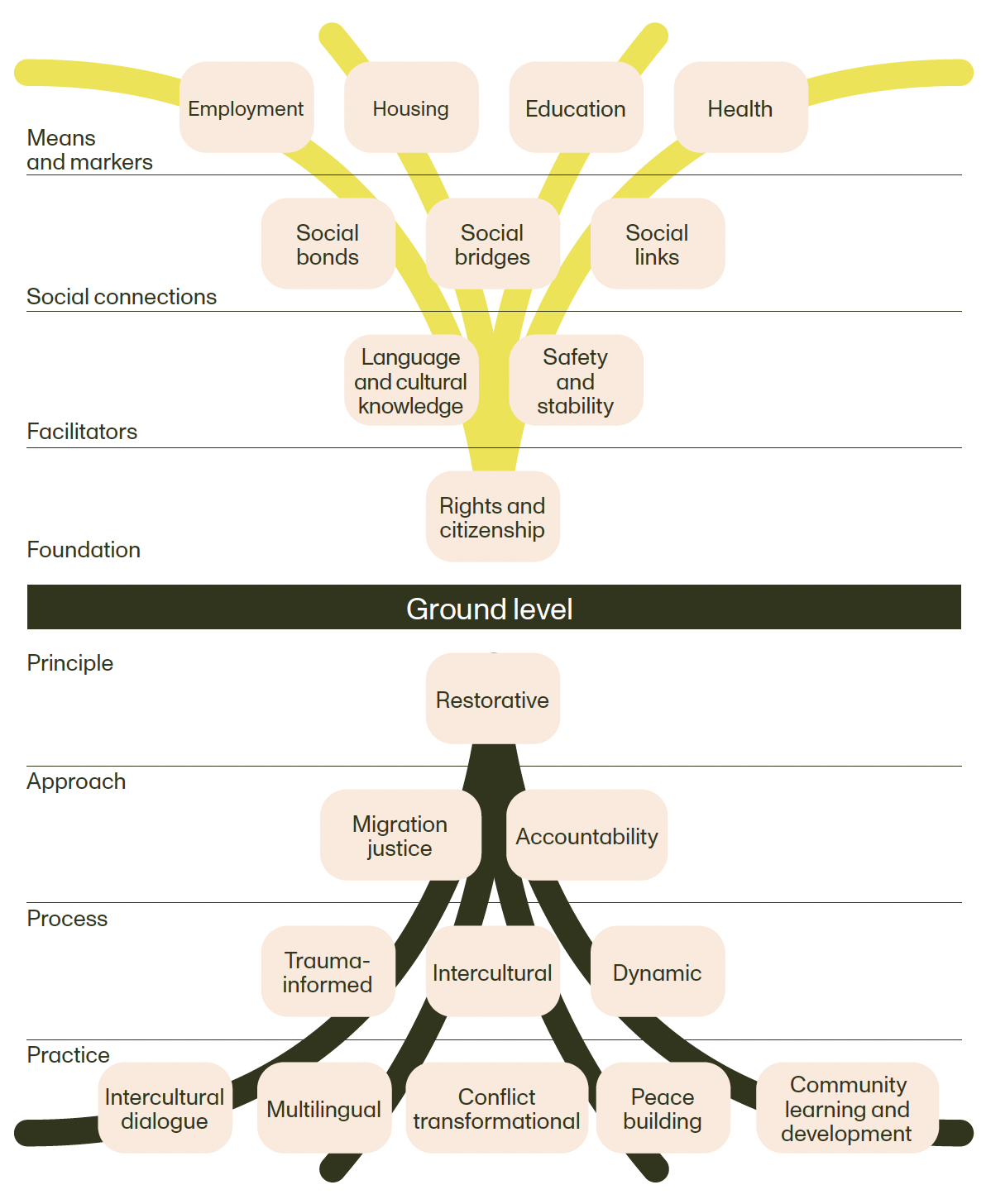New Scots Refugee Integration Strategy: 2024
A strategy supporting the integration of refugees, people seeking asylum and other forced migrants within Scotland’s communities. The strategy is led jointly by the Scottish Government, COSLA and Scottish Refugee Council.
Defining and Understanding Refugee Integration
Defining refugee integration[11]
- Integration is a multidirectional process. This means that expectations of making integration work are not only on New Scots or the communities where New Scots live. Institutions such as schools, healthcare providers and all levels of government must also be actively involved in ongoing dialogue and collaboration. Successful and inclusive approaches to integration are about working with New Scots, the communities where they live, and all other elements of society involved in fostering integration. Such approaches must involve understanding the unique challenges and barriers that New Scots face, as well as willingness to regularly reflect on practices and, where necessary, adapt approaches to match changing needs.
- Integration is a multilingual process. This means that the many languages spoken by New Scots are welcomed and included as part of processes of integration. Successful integration includes practices to support multidirectional sharing of culture and language in communities across Scotland as New Scots resettle there.
- Integration is an intercultural process. This means that integration involves dialogue and mutual learning between the many different cultures, beliefs and faiths which make up our society. Integration involves the active interaction between people from diverse cultures, where people share, respect and learn from each other.
- Integration is a restorative process. This means that integration seeks to restore the rights and dignity of people who have been forced to flee their country. Integration requires an acknowledgement of the trauma that New Scots have experienced (as part of their well-founded fear of persecution and their journeys to seek sanctuary) and how this has impacted on their mental health; and the need for trauma-informed practices to support people in rebuilding their lives.
- Integration is an inclusive process. This means that everyone within the community is included in processes of integration. Integration practices must also recognise and foster the existing skills and knowledge of New Scots and people from receiving communities so that everyone can participate in flourishing Scottish communities.
Understanding integration
The model of integration originally developed by Ager and Strang in 2008 has informed Scotland’s New Scots Refugee Integration Strategy for over a decade. Human rights are considered to be the foundation of the model, while language and cultural knowledge, safety and stability are seen as key facilitators of integration. Social connections are understood as being essential in order to access services and feel settled into local communities. Meanwhile, the means of achieving integration – such as employment, housing, education and health – can also be understood as markers of whether or not integration is being achieved.
Drawing on learning from the Covid-19 pandemic and the large- scale relocation and resettlement of people from Syria, Afghanistan and Ukraine, the New Scots Strategy needs to adopt an expanded understanding of integration – as depicted in the diagram below (Fig. 1). This model develops the concept of integration as a multifaceted, growing and evolving process, and is presented through the image of a tree: a growing, dynamic entity.
The model traces the research undertaken in Scotland since 2014. Whilst initiatives have been ongoing in other parts of the UK, which have informed the work, we have not adopted the 2019 Home Office review of the Ager and Strang Indicators of Integration. However, the New Scots model below has evolved from the original Ager and Strang framework to reflect the line established by New Scots, drawn from research with New Scots and in communities. The policy environment is different and whilst there are considerable overlaps, the context for integration in England and from the Home Office Indicators of Integration is not the same as the New Scots approach developed and maturing in Scotland.
Using the image of the tree, we can see that the Ager and Strang model is like the trunk and branches: the more visible aspects and indicators that determine integration. This re-framing develops the roots: those principles, processes and practices which sustain and support the whole tree by showing ‘how’ the processes of refugee integration can happen without becoming assimilation.
As the diagram below illustrates, the principle of restorative integration is the tap-root on which the whole dynamic process depends. The New Scots Strategy seeks, as far as possible within the limits of devolved powers, to restore the rights and dignity of people who have been forced to flee their country and seek sanctuary, and to acknowledge the impact of trauma on this process.
Approaches which place migration justice and accountability at the centre of integration practices support the visible parts of the tree – these approaches are reflected in the New Scots Strategy (see Approach and Principles section above).
The whole process of integration needs to be trauma-informed, inclusive, intercultural and multidirectional if it is to be sustainable. This process is explained in ‘defining refugee integration’ above, and represented by a lower level of roots in figure 1.
The deepest roots represent those practices through which integration takes place in our communities. These practices need to be multilingual; supportive of intercultural dialogue, conflict transformation and peace building.[12] They must also be informed by the principles of community learning and development.[13]

Contact
There is a problem
Thanks for your feedback